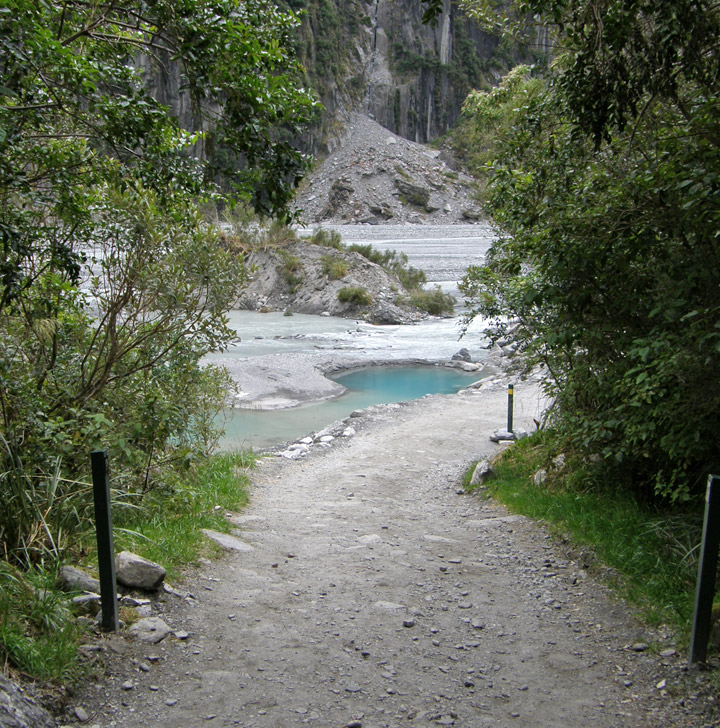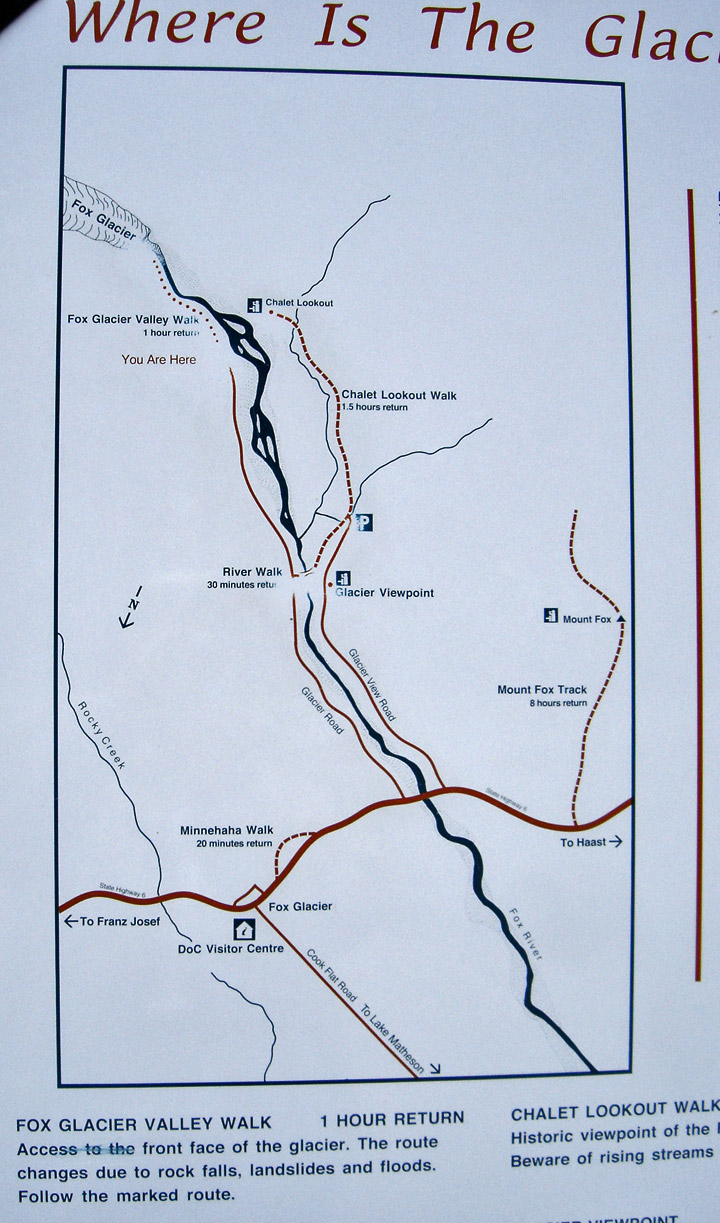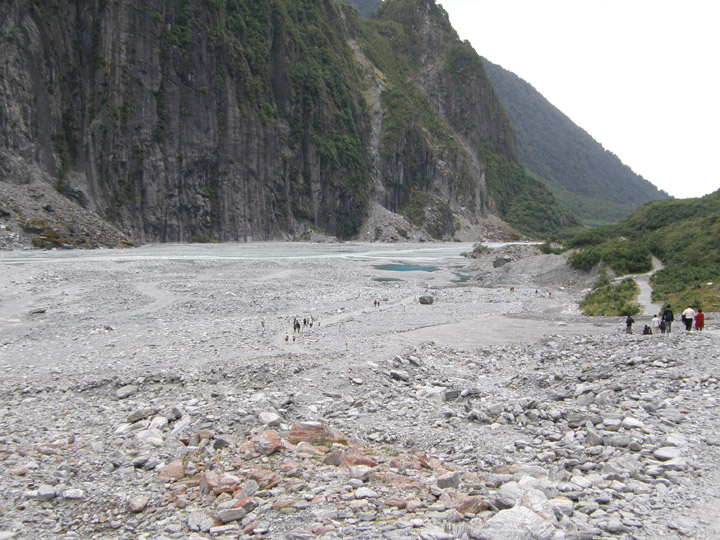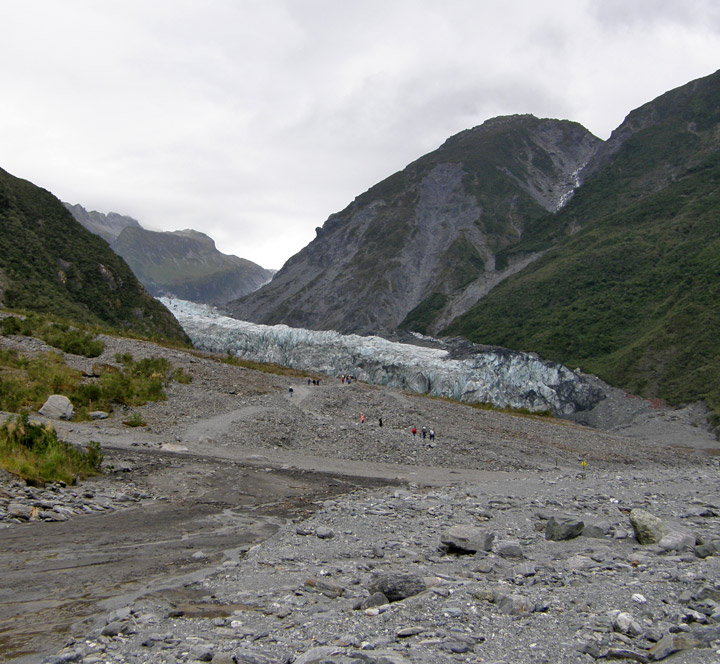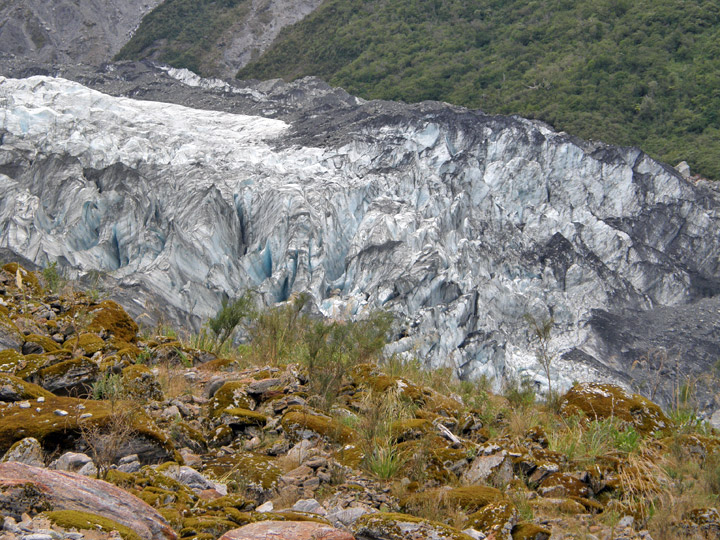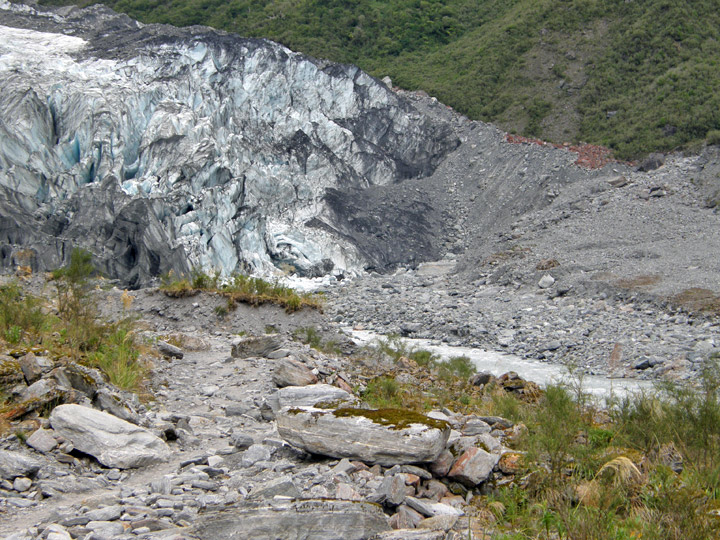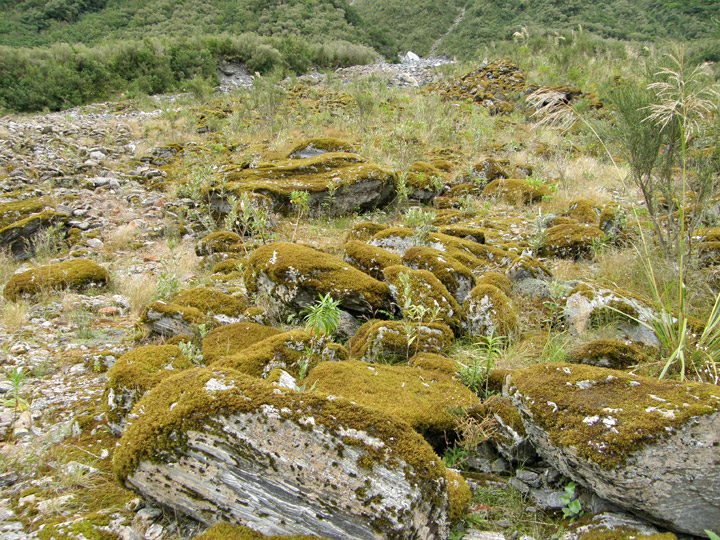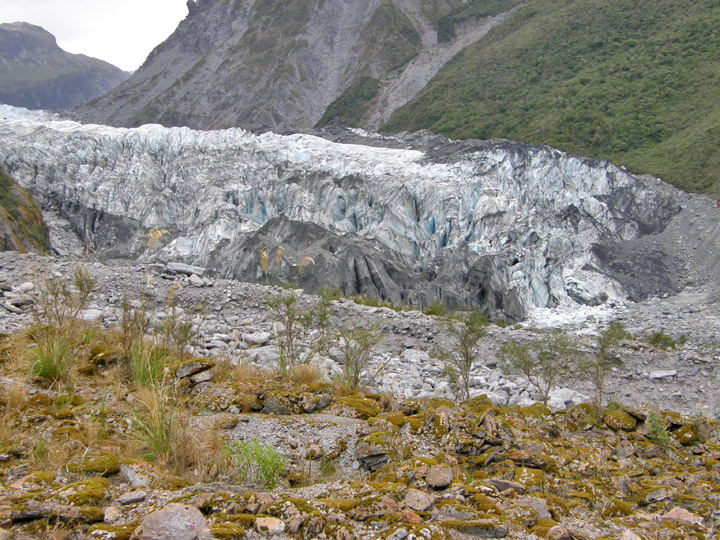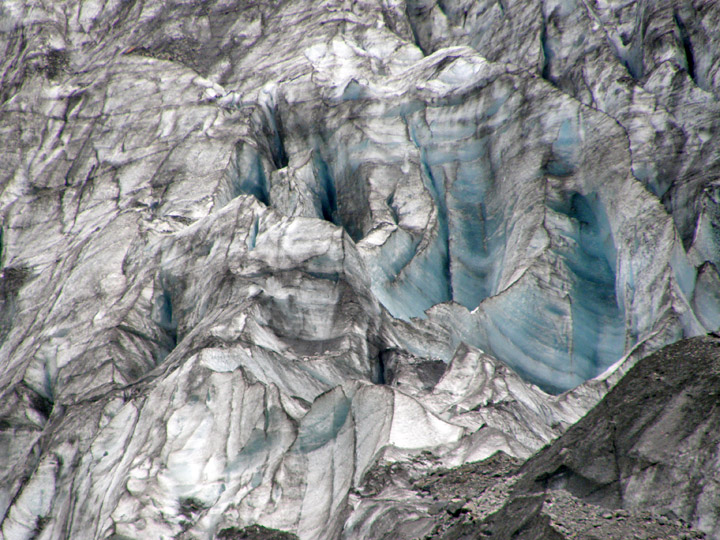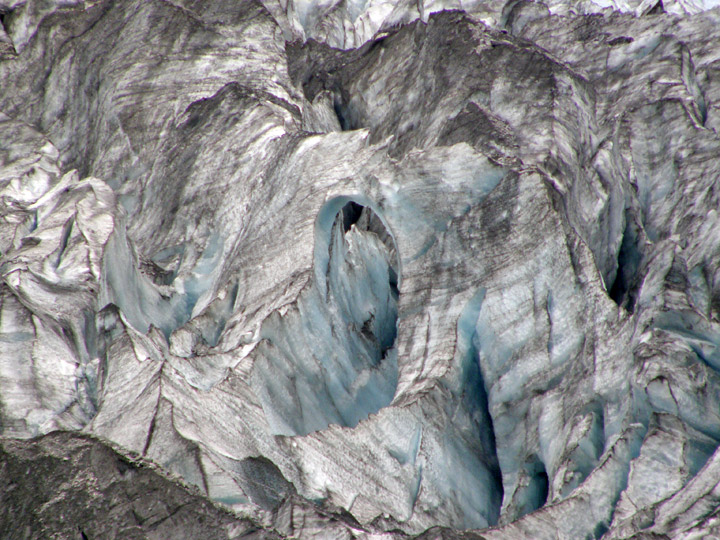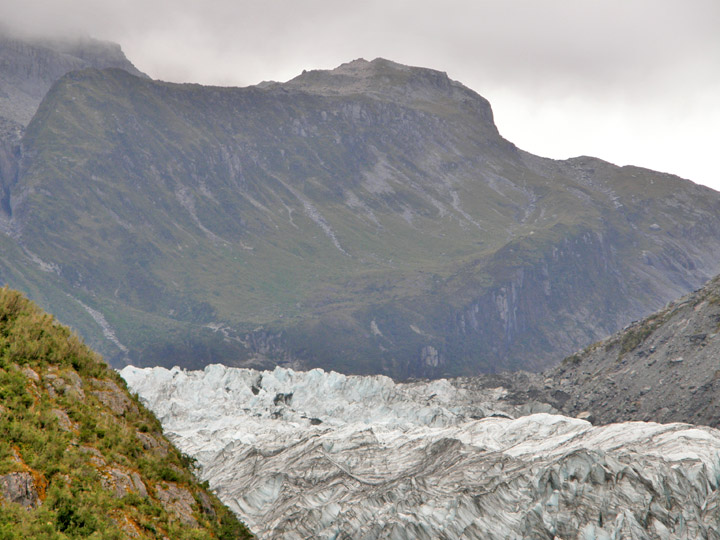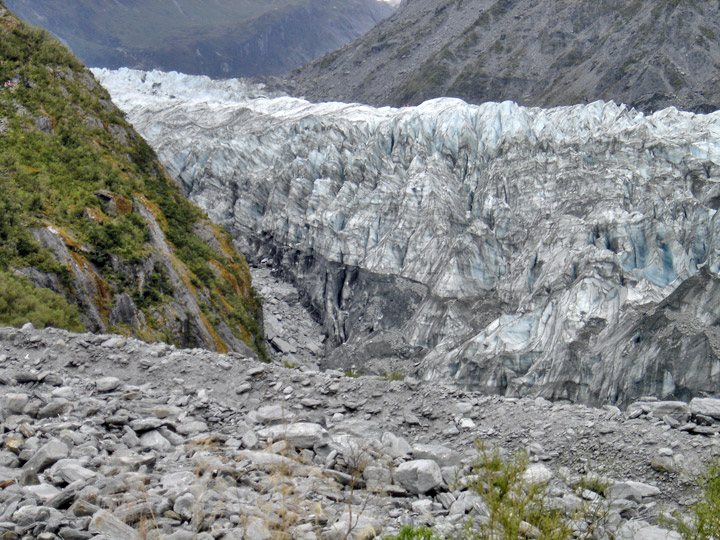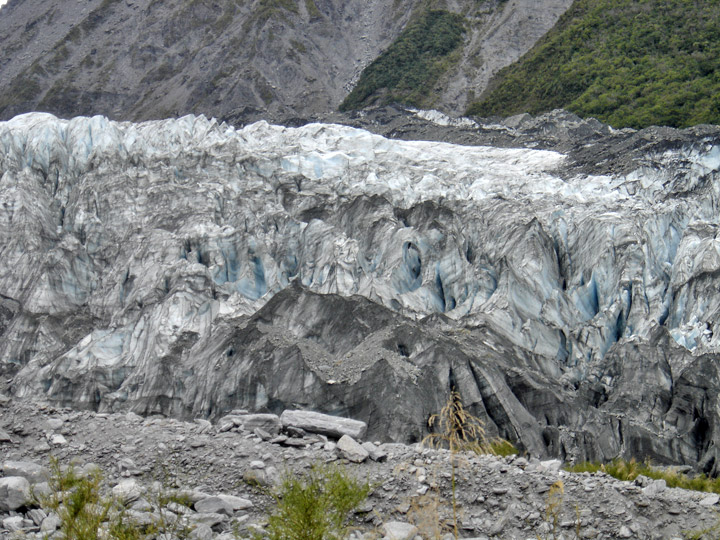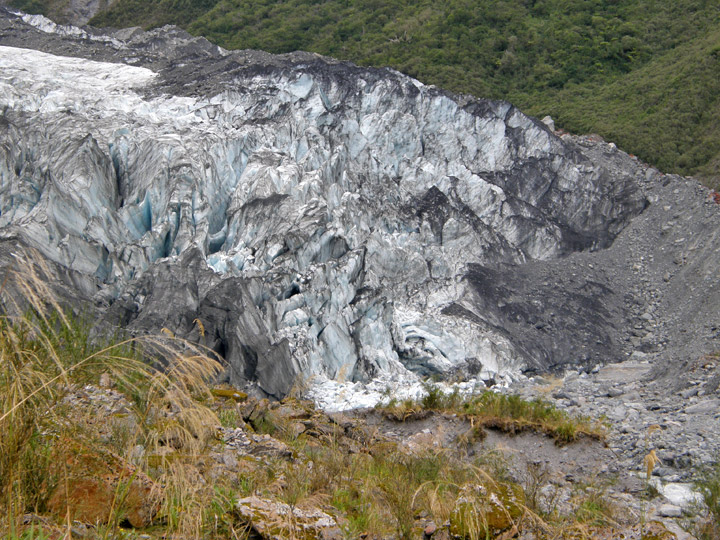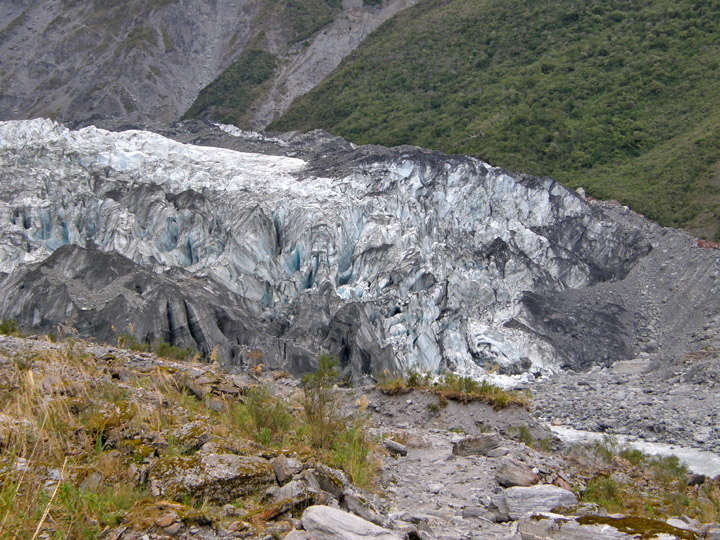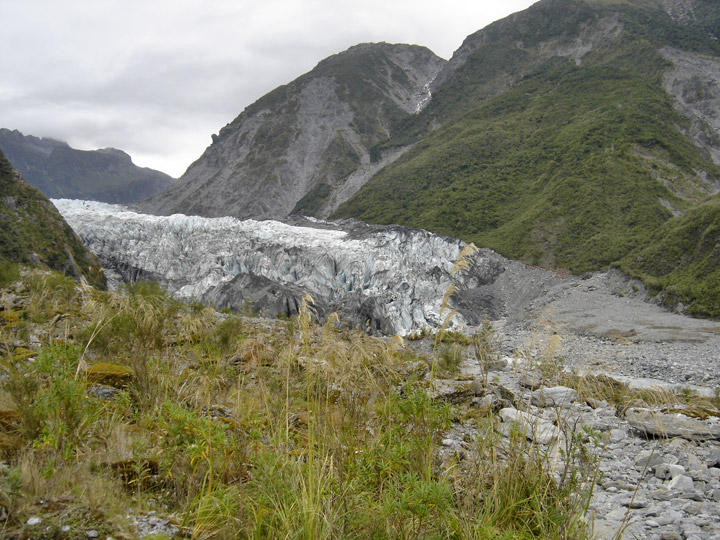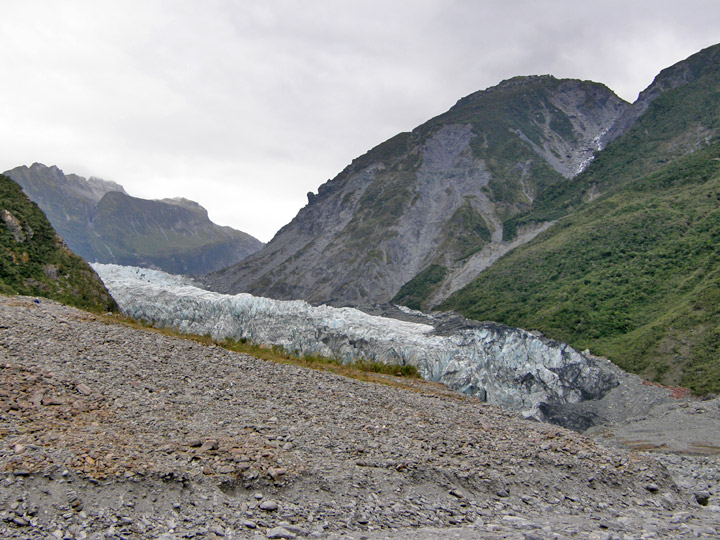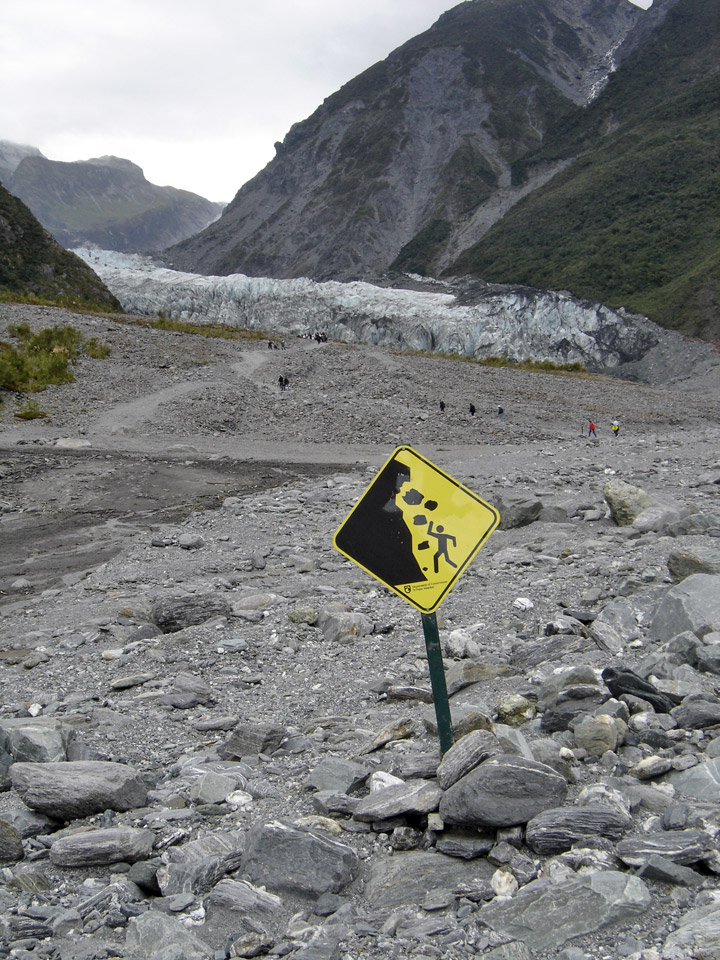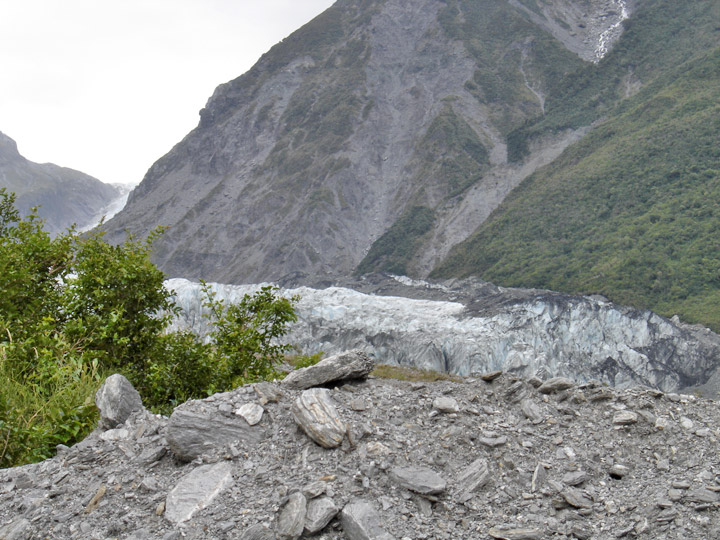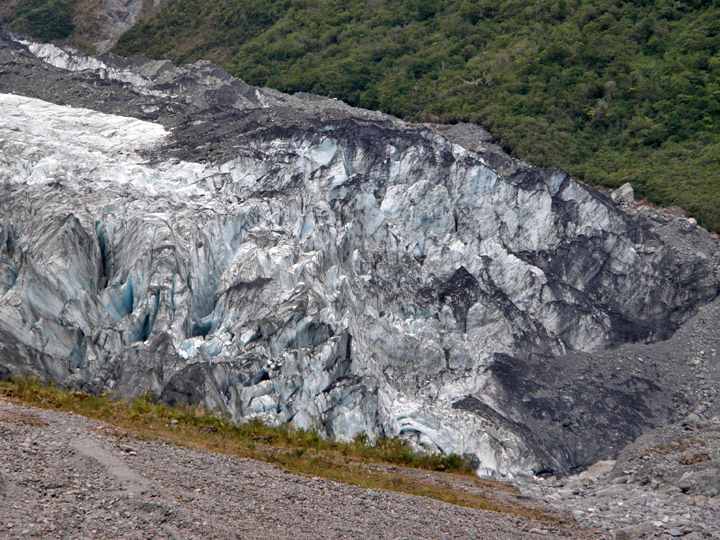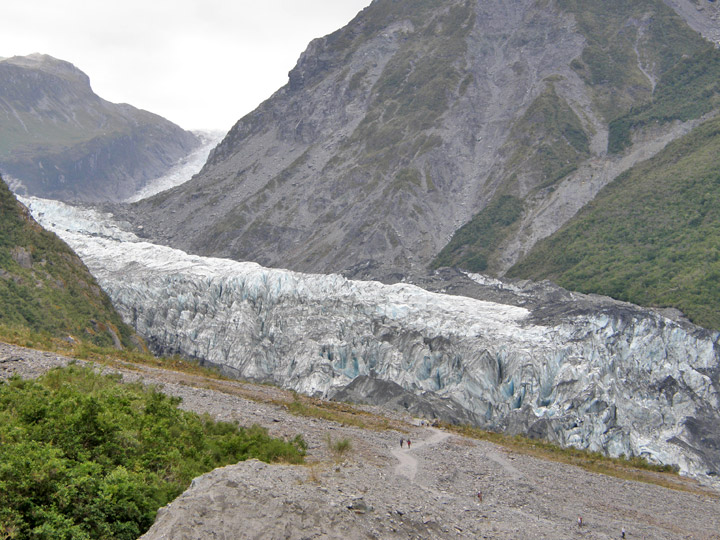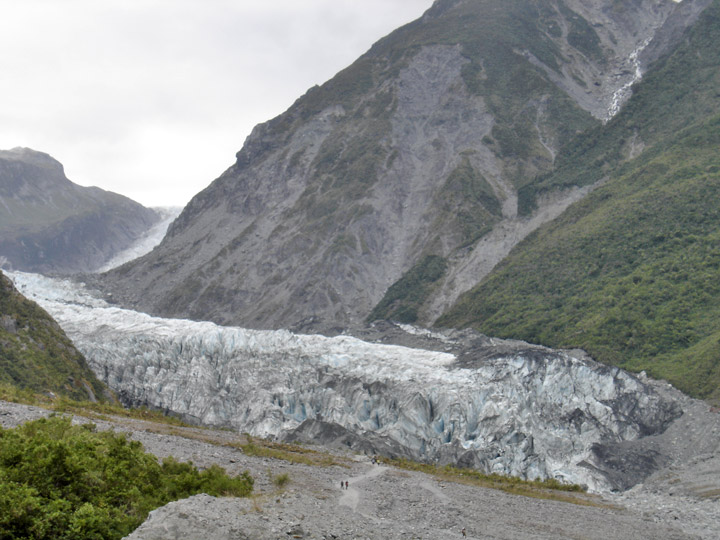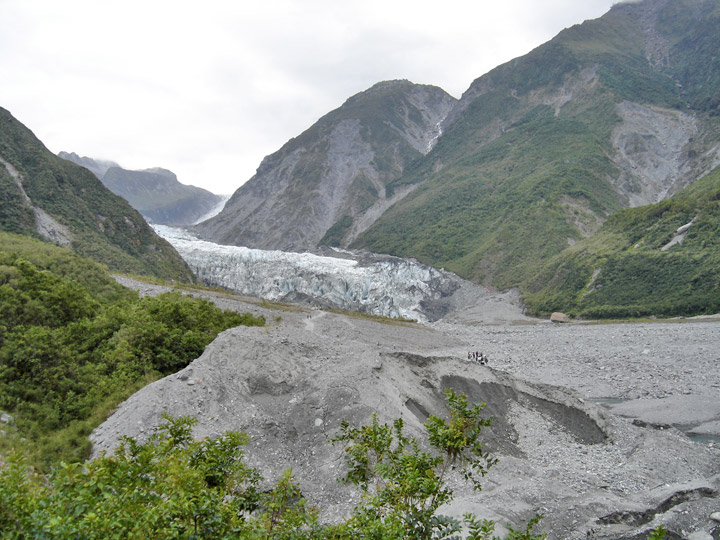

Fox Glacier

Fox Glacier
The Fox Glacier (Te Moeka o Tuawe in Māori) is a 12 km long glacier located in Westland National Park on the West Coast of New Zealand's South Island. It was named in 1872 after a visit by the then Prime Minister of New Zealand, Sir William Fox.
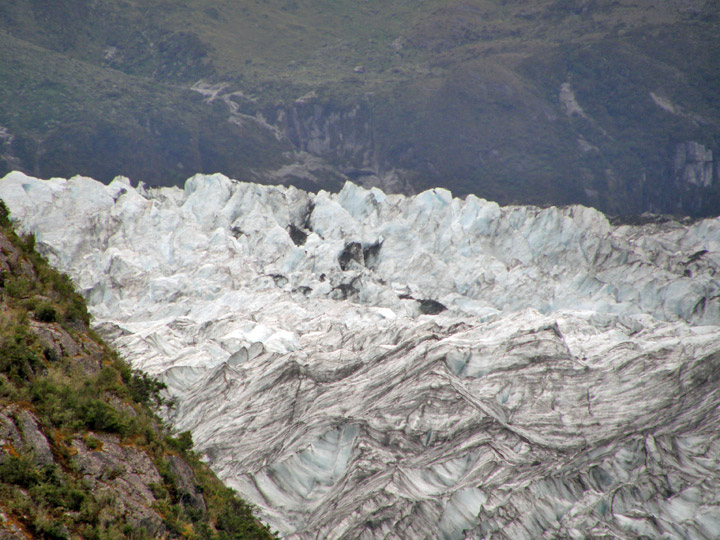
Fed by four alpine glaciers, Fox Glacier falls 2,600m on its 13km journey from
the Southern Alps down to the coast, with it having the distinction of being one
of the few glaciers to end among lush rainforest only 300 meters above sea
level. Although retreating throughout most of the last 100 years, it has been
advancing since 1985 at an average of about a meter a week.
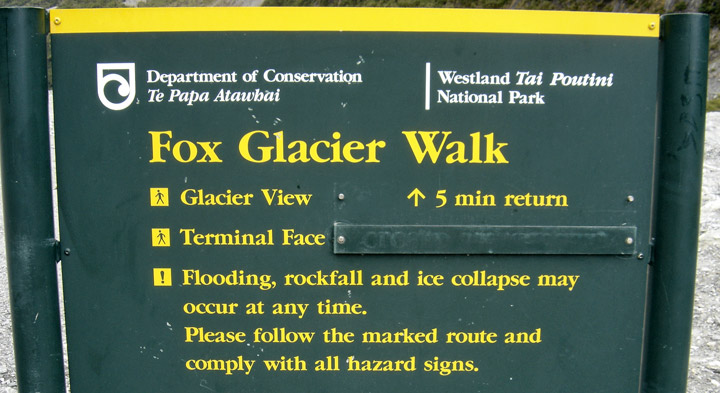
The outflow of the glacier forms the Fox River. During the last ice age, its ice
reached beyond the present coastline, and the glacier left behind many moraines
during its retreat. Lake Matheson formed as a kettle lake within one of these.
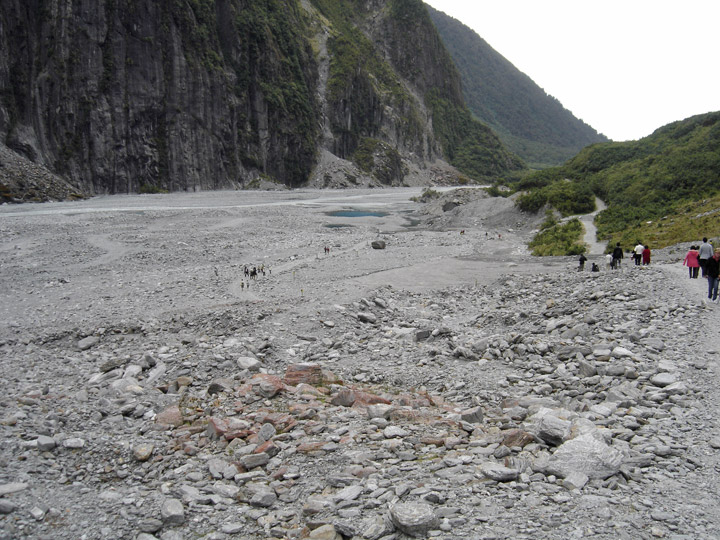
Like the nearby Franz Josef Glacier, it is one of the most accessible glaciers
in the world, with its terminal face an easy walk from Fox Glacier village/Weheka.
It is a major tourist attraction and about 1000 people daily visit it during
high tourist season. Though people are told not to, some go beyond the barriers
and climb without guides onto the glacier, whose rapid advance creates dangers
of sudden ice and rockfalls.
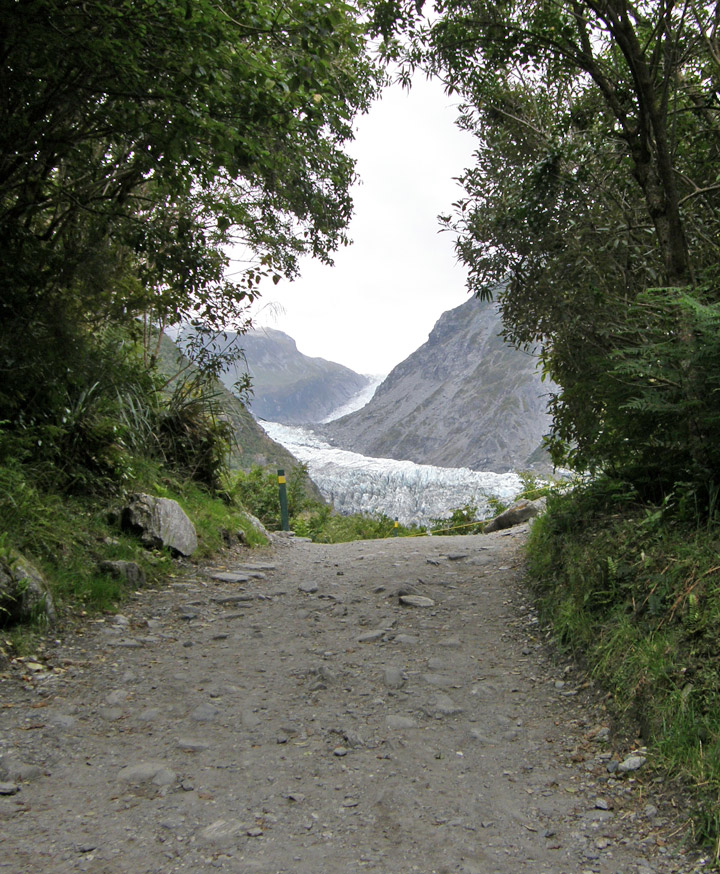
Fox Glacier township/Weheka, 6 km away from the glacier, functions mainly as a
service centre for tourists, though it also services the local farming
community, which had been its main focus until the 1990s (though tourism started
as early as the late 1920s). The approximate township site had been gazetted as
early as 1866. Bruce Bay is 46 km to the south-west of the township, and Franz
Josef is 23 km north-east. State Highway 6 runs through the town.
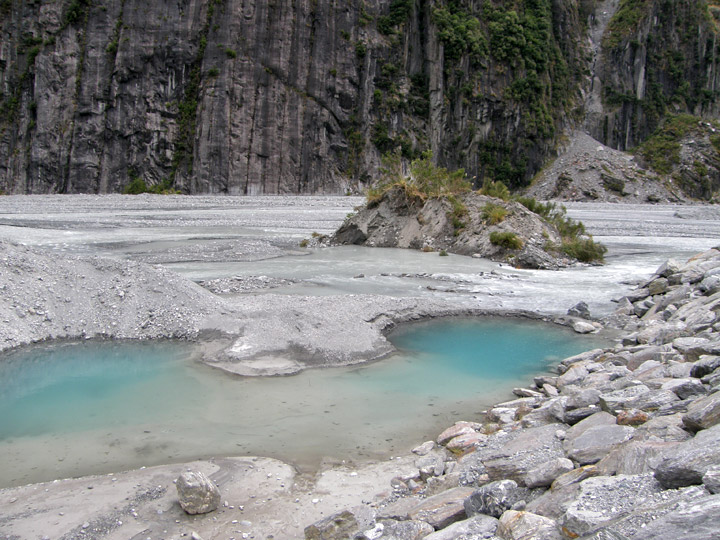
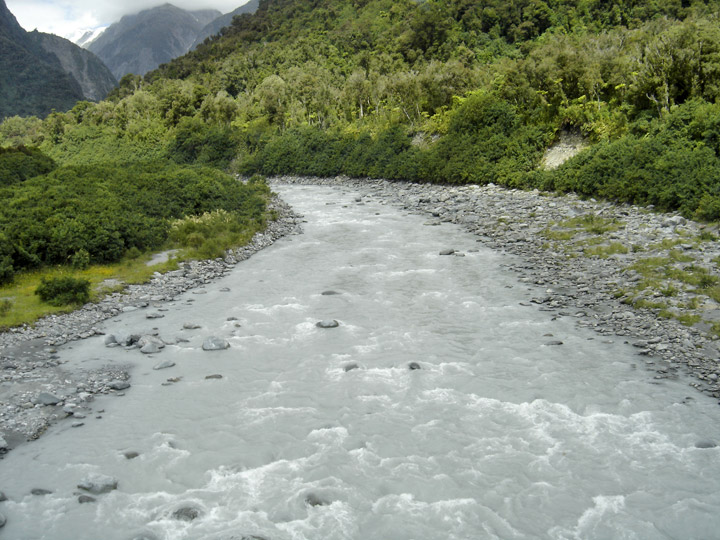
glacier feed stream
The population was 378 in the 2006 Census, an increase of 123 from 2001
Text from Wikipedia
